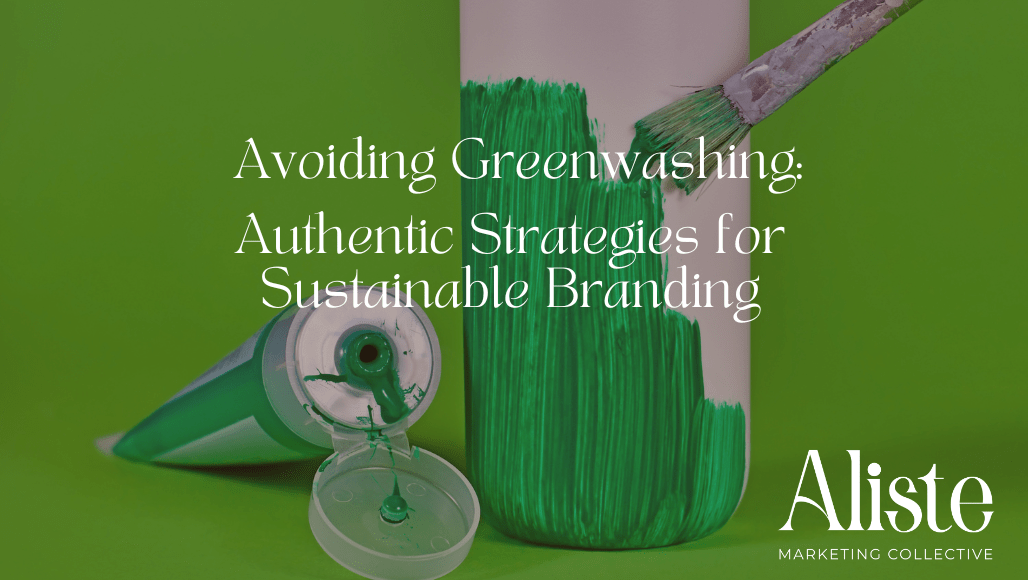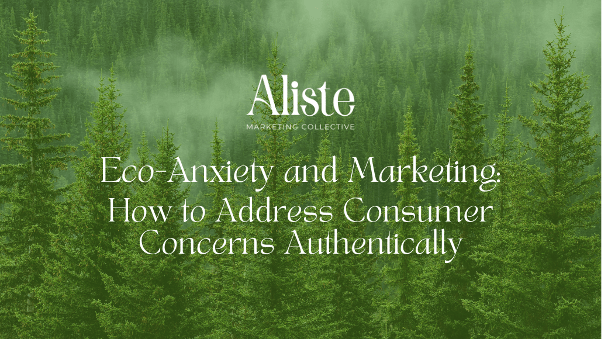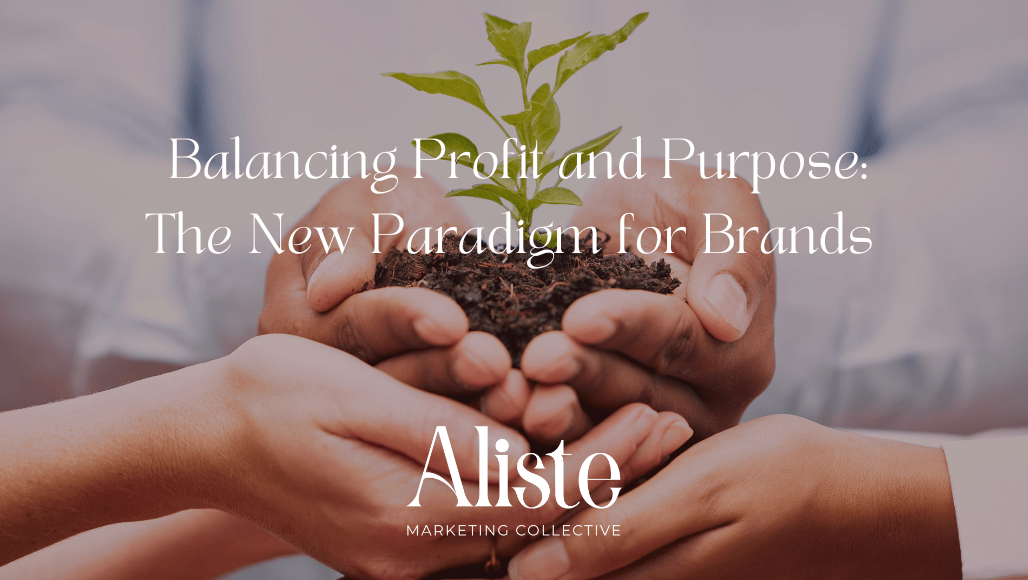What Greenwashing Really Looks Like
Let’s call it what it is: greenwashing is when a company claims to be environmentally friendly without backing it up with real action. Maybe you’ve seen a product boasting “60% more recycled materials,” but a closer look reveals they just nudged recycled content from 1% to 2%. That’s not innovation—that’s marketing spin. And today’s consumers? They’re too smart for that.
When brands get caught greenwashing, the fallout is real. Trust tanks, sales drop, and the legal and ethical consequences can be brutal. At Aliste Marketing, we believe in building brands that are as real as they are remarkable. That means no shortcuts, no empty promises—just purpose-driven action that stands up to scrutiny.
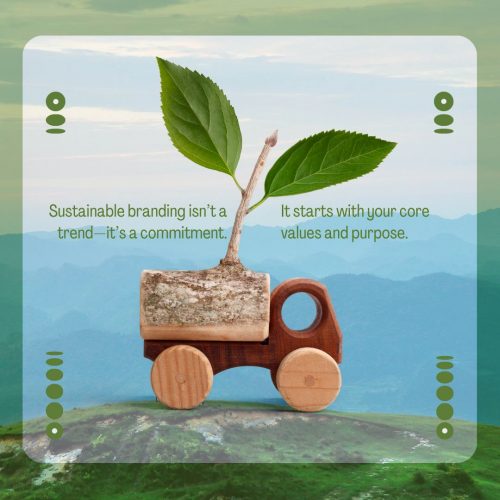
Building a Brand That’s Actually Sustainable
Sustainable branding isn’t a trend—it’s a commitment. It starts with your core values and purpose. Define what sustainability means for your business and how it fits with your mission. Don’t just jump on the green bandwagon because it’s trending—do the work. Start with a sustainability audit to be honest about where you stand and where you need to improve.
Set goals that are both realistic and measurable. If you’re not ready to shout about your progress, you’re not ready to market it. Actions first, messaging second. This is where the real magic happens: when your brand’s actions and words are in sync, you build trust that lasts.
Transparent Communication: No Smoke, No Mirrors
Sustainable Practices That Make a Difference
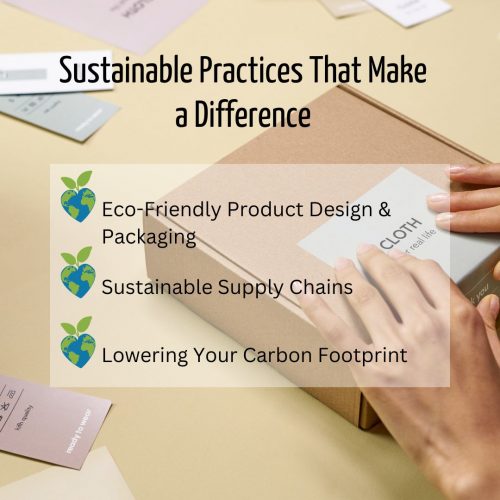
Sustainability isn’t one-size-fits-all, but here are a few strategies that make a real impact:
- Eco-Friendly Product Design & Packaging: Choose biodegradable or reusable materials and keep designs minimal to cut down on waste.
- Sustainable Supply Chains: Partner with suppliers who share your values and, when possible, source locally to reduce emissions.
- Lowering Your Carbon Footprint: Upgrade to energy-efficient lighting, invest in renewables, and encourage flexible work to reduce travel.
Certifications: Proof, Not Puffery
Eco-conscious consumers want proof, not promises. Certifications like LEED, USDA Organic, Energy Star, WaterSense, and WasteWise show you’re serious. Third-party verification and regular sustainability reporting keep you accountable and credible. These aren’t just badges—they’re your brand’s receipts for doing the work.
Engaging Your Whole Ecosystem
Measuring and Reporting Impact
How do you know if your efforts are working, and how do you make a greater impact? Here are key performance indicators (KPIs) you can establish:
Environmental Metrics
- Energy Use: How much energy are you using in production?
- Water Use: How much water are you using in production?
- Waste Production: How much waste is your facility producing?
- Recycling Rates: What percentage of your waste do you recycle?
Marketing Metrics
- Impressions: How many times has your message been seen?
- Search Engine Rankings: How high do you rank on search engine results pages?
- Click-Through Rate: How many users click on your ads or links?
- Conversion Rate: How many take a desired action?
- Return on Investment (ROI): How much profit did you generate?
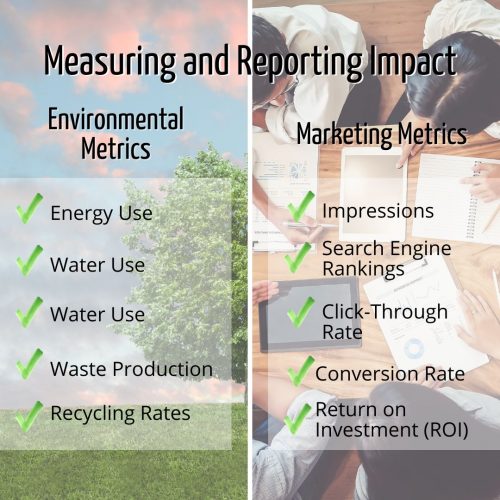
Case Studies: Brands Doing Sustainable Marketing Right
Amid all the greenwashing, there are brands that set the bar for authentic, sustainable marketing. Patagonia, for example, has built its reputation on radical transparency and environmental activism. Their “Don’t Buy This Jacket” campaign challenged consumerism and put the planet first, encouraging people to think before they buy—even if it meant selling less.
Delta Airlines is another standout. Aviation isn’t exactly known for being green, but Delta is facing its carbon footprint head-on, aiming for net-zero emissions by 2050. By retiring older, less efficient aircraft and investing in sustainable aviation fuel, they’re proving that even the biggest industries can make meaningful change.
What do these brands teach us? When the planet matters more than profit, your sustainable marketing strategy has real substance—and real staying power.
In Summary
Authentic sustainable branding comes from your core values and purpose, which you show and support through sustainability audits and realistic, measurable goals. When your brand’s actions align with its messaging, you avoid greenwashing, deliver real solutions to your customers, boost your bottom line, and help preserve the planet for future generations.
Ready to build an authentic, sustainable brand that resonates with eco-conscious consumers? Aliste Marketing specializes in helping purpose-driven companies develop genuine sustainability strategies and communicate them effectively. Contact us today to learn how we can help your brand make a real impact while avoiding the pitfalls of greenwashing

